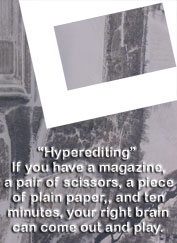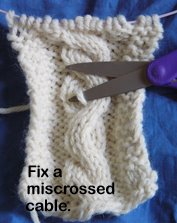.
Um. Failed to get the identifying info, but am sure this is Egyptian. Love these colors together.
Isn't this the cutest? "Amphoriskos. Clay, partially mold-made, black gloss ware. Ptolemaic Period (3rd century BC)." Amused by this -- "formerly in the Metropolitan Museum of Art."
This was about 4.5" tall, if memory serves.
Similar shape; much bigger object. This one has a rounded bottom; the one above has a teeny tiny foot.....
Love the ridges on the big one, which, I think, is a wine jug.
Love that one is precise and shiny and fussed-over, and the other is rough and quick and covered with the shape of the maker's fingers.
More glass. I believe the color is a result of being buried for a long, long time. Wow, eh?
"Mosaic glass rendering of fish." This little scrap was no more than two or three inches long. I'm amazed at the detail. Look at the teeth!
"Elaborately ornamented cornice block ... several courses of decorative moldings and other standard Roman architectural motifs." 1st-3rd century AD.
I don't think I'd seen bovine skulls, except from the American southwest......
"Garland and Bucranium Architectural Frieze. Roman Period (1st century BC -- 1st century AD. Garland swags held up by the sculls (sic!) of sacrificed bulls were a common emblem in Roman religious and funerary art."
I did not know that. (Nor that there was a special word for bovine skull!)
Swooning over these. They were little -- I don't think the biggest one was six inches tall. Love the three of them together, love the pale green against the sandy linen..... I don't even mind the wires holding them upright despite their rounded bottoms.
How did something so fragile survive more than two millenia of human hubbub and destruction?
"Perfume and Oil Bottles. Glass, free-blown. Roman Period (1st -- 2nd century AD)"
Oh dear, no info captured.
I was taken by the excellence of this carving. The sculptor clearly had more than a passing aquaintance with human and equine anatomy. Isn't it cool that this small museum, in a not-so-big town, has such excellent things???
Wondering what is the story here -- the snake escaping the basket/box; the ... dancer? at right..... This was, maybe, about 12" tall.
Of course one of the excellent things about glass is transparency. Love what happens when the light goes through this little (5" diameter?) bowl. You can clearly see that the glass is thicker and thinner......
"Syrian Glass. Ancient Syria was a major glass-making center." "Ribbed Bowl. Glass, cast. Roman Period (1st century BC -- 1st century AD)"
One of the things that interests me is how very little information we need, to recognize something as a human form.
"Figurine, Perhaps of a Mourner. Clay. Punic Period (6th-5th century BC)"
"Plaster Mummy Masks of the Roman Period. 1st -- 2nd century AD." "Mask for Adult Woman. Plaster, paint, glass"
"Mummy Portrait of a Woman Wearing Jewelry. Wood, encaustic, gilding. Roman Period (AD 98-117)"
They were keeping this very dark, to protect it, I'm sure. This is my original image.
Wow. Clearly a portrait. She was so young.... I wonder ... did they have the portraits done way before they expected to die? Decades before? She certainly doesn't appear to be ill, looking straightforwardly, as she does, right into our eyes.........
I neglected to capture the info about this, but I bet it is alabaster. I don't think I've ever seen such a cool use of that material before. Wow.
This was pretty big -- 10" in diameter? A bit more?
Ok, ripping ourselves away from the museum. I know they have a lot of textiles. We didn't see any, but then, we didn't go in the old part of the building, either. Maybe they have textiles on display in there, as they did the last time I was in there........ We'll have to go back. I was so glad my friend suggested this visit. I enjoyed it.
Vines on a house.
.
Wednesday, December 21, 2011
Subscribe to:
Post Comments (Atom)


































No comments:
Post a Comment